Table of Contents
Introduction
According to Microphone Statistics, A microphone is a device that transforms sound waves into electrical signals. There are various types of microphones, such as dynamic, condenser, ribbon, lavalier, and USB microphones, each with distinct features and applications.
Key components of a microphone include the diaphragm, capsule, transducer, output connector, and housing. When sound waves impact the diaphragm, they move, leading to alterations in electrical properties that generate the electrical signal.
This signal is then processed to produce audio output. Having a grasp of fundamental microphone principles is essential for selecting the right one for specific needs and achieving high-quality audio recordings.
Editor’s Choice
- The global microphone market generated a revenue of $9.20 billion in 2023.
- Handheld microphones emerge as a dominant segment, consistently leading in revenue generation from 2022 to 2032, starting at USD 1.23 billion in 2022 and increasing to USD 1.76 billion in 2032.
- Analog and digital technologies each account for 21% of the market share, reflecting a balanced distribution between traditional and modern solutions.
- As of the latest data available, the semiconductor and electronics industry commands the largest market share, accounting for 35% of the total market.
- In the realm of communication technology, wired communication commands the larger portion, holding 64% of the market share. Wired technologies rely on physical connections, such as cables or wires, for transmitting data and signals.
- Modern large diaphragm condenser microphones can achieve remarkably low self-noise levels as low as 5 dBA.
- There is a slight decline in sales of ECM microphones, reaching 2.95 million units by 2022.
- Modern large diaphragm condenser microphones can achieve remarkably low self-noise levels as low as 5 dBA.
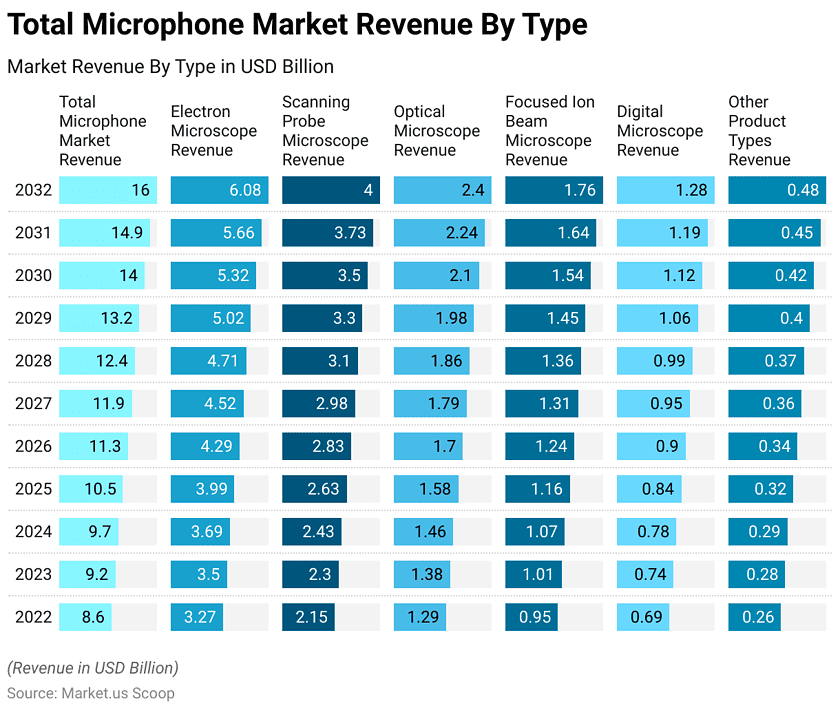
Global Microphone Market Overview
Global Microphone Market Size
- The global microphone market has experienced steady growth in revenue over the past decade at a CAGR of 6.6%.
- In 2022, the market revenue stood at USD 8.60 billion, marking the beginning of a steady growth trend.
- By 2023, it had increased to USD 9.20 billion, reflecting a promising expansion.
- The upward trajectory continued unabated, with revenue figures of USD 13.20 billion in 2029 and USD 14.00 billion in 2030.
- Looking ahead, projections suggest a continued expansion, with revenue anticipated to reach USD 14.90 billion in 2031 and USD 16.00 billion in 2032, underscoring the steady growth and promising prospects within the global microphone market.
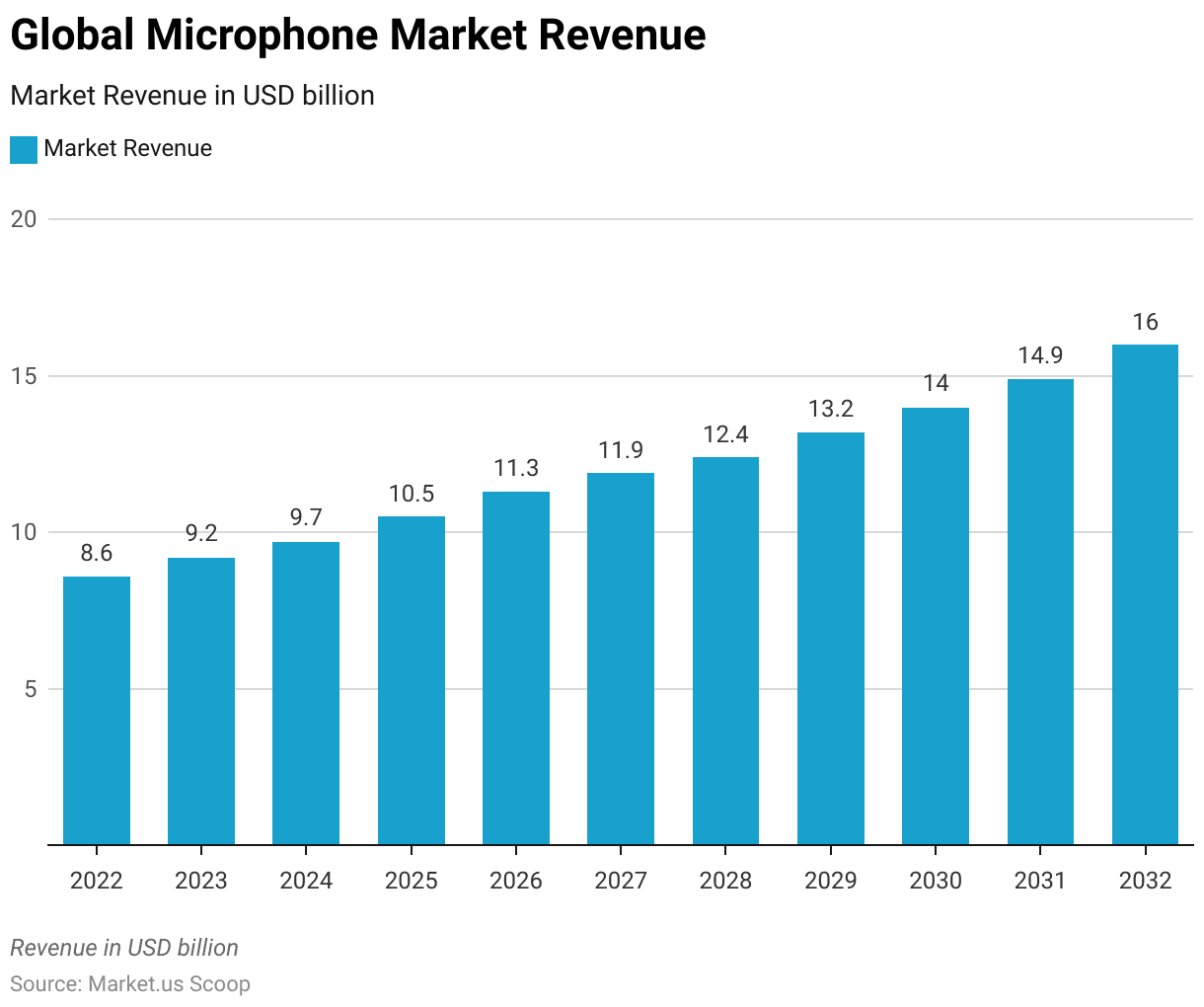
Microphone Market Size – By Type
- The global microphone market exhibits a diversified landscape with various types contributing to its overall revenue growth.
- Handheld microphones emerge as a dominant segment, consistently leading in revenue generation from 2022 to 2032, starting at USD 1.23 billion in 2022 and increasing to USD 1.76 billion in 2032.
- Head-worn microphones follow closely behind, showcasing steady growth from USD 0.95 billion in 2022 to USD 1.36 billion in 2032.
- Goose Neck and Freestanding microphones also demonstrate consistent revenue expansion throughout the period, with Goose Neck microphones reaching USD 1.06 billion and Freestanding microphones reaching USD 0.50 billion by 2032.
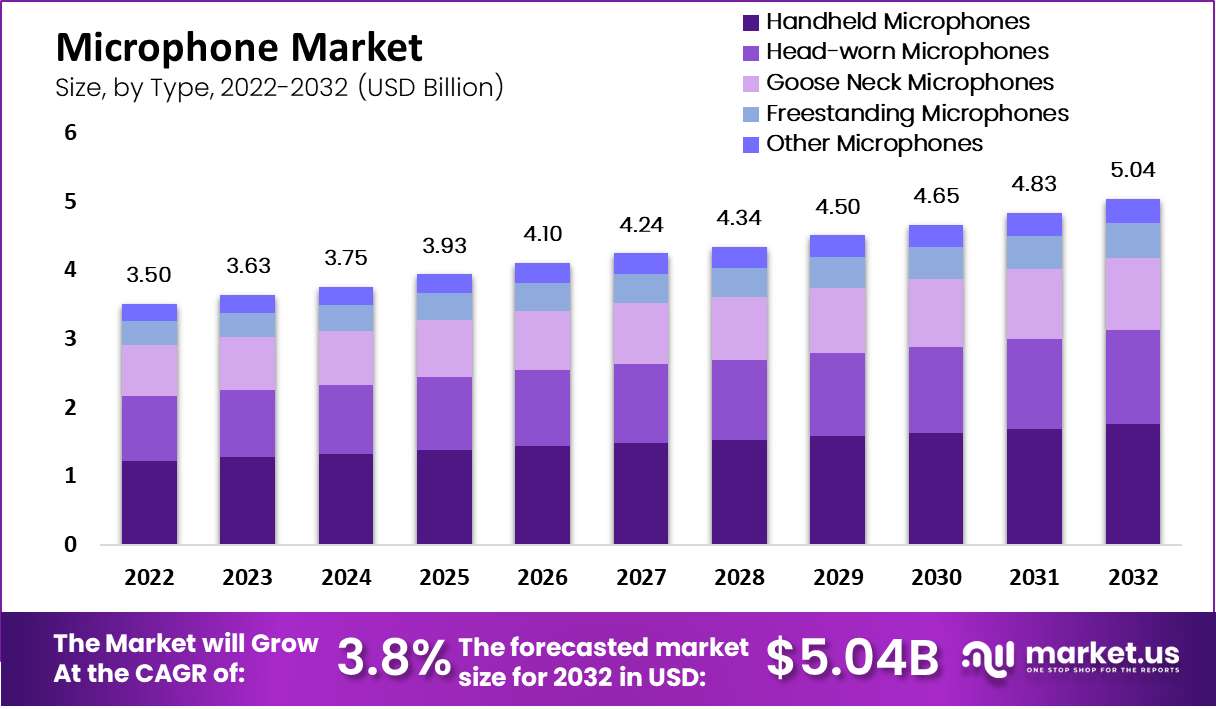
Global Microphone Market Share – By Application
- The global microphone market is segmented by application, with varying market shares reflecting the diverse usage of microphones across different sectors.
- As of the latest data available, the semiconductor and electronics industry commands the largest market share, accounting for 35% of the total market.
- Following closely behind is the life sciences sector, which holds a significant market share of 27%.
- Nanotechnology represents another prominent application area, capturing 18% of the market share.
- Material science is also a significant segment, accounting for 13% of the market share, where microphones aid in research, analysis, and testing of various materials’ properties.
- Additionally, other applications collectively make up 7% of the market share, indicating microphones’ versatility across a broad spectrum of industries and uses beyond the aforementioned sectors.
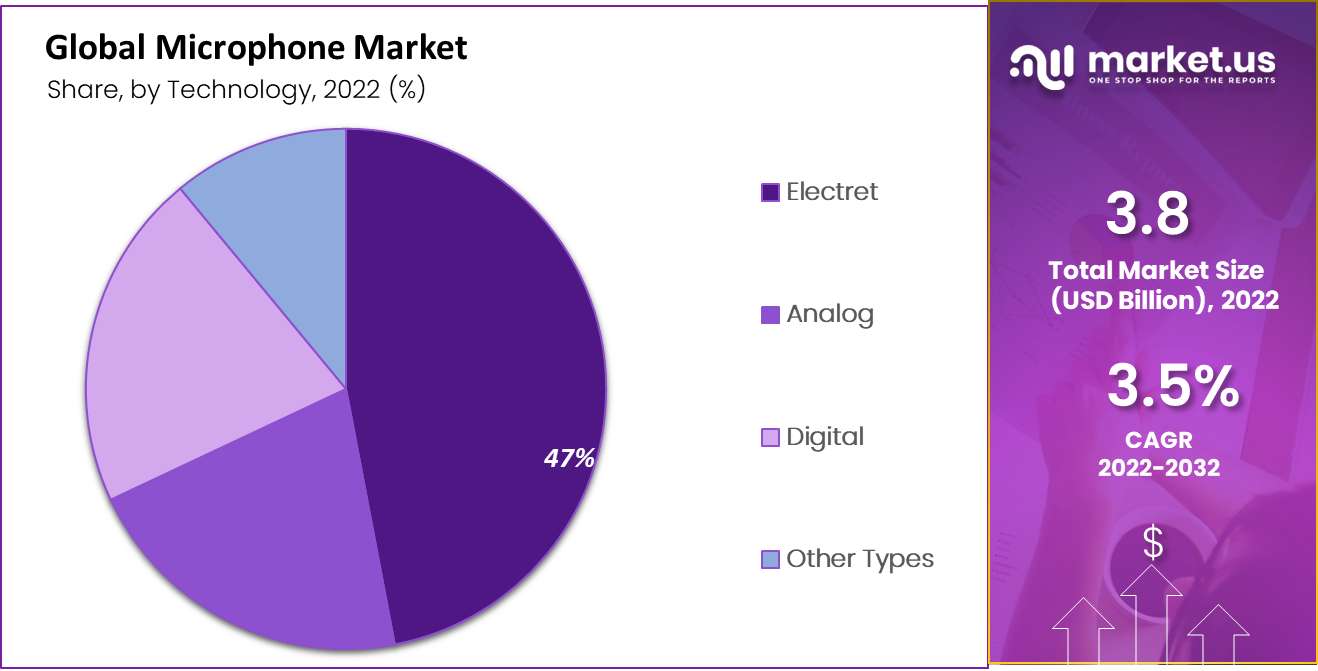
Microphone Market Share – By Communication Technology
- In the realm of communication technology, the market share is segmented between wired and wireless technologies.
- Wired communication commands the larger portion, holding 64% of the market share. Wired technologies rely on physical connections, such as cables or wires, for transmitting data and signals.
- Conversely, wireless communication occupies 36% of the market share. This category encompasses technologies like Wi-Fi, Bluetooth, cellular networks, and satellite communication systems.
- In the technology landscape of the market, electret technology holds a significant majority share, commanding 47% of the market.
- Analog and digital technologies each account for 21% of the market share, reflecting a balanced distribution between traditional and modern solutions.
- The remaining 11% is attributed to other types of technologies, underscoring a diverse ecosystem where various innovative approaches contribute to the overall market dynamics.
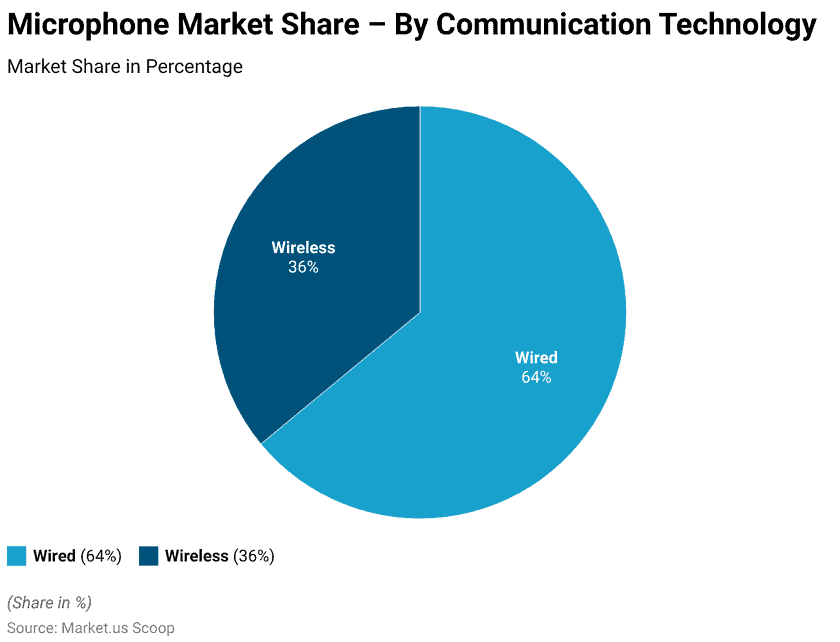
Microphone Specifications
Impedance
- Impedance, expressed in Ohms (Ω), represents the resistance in an AC circuit.
- A professional microphone is typically classified as “low-impedance,” indicating an output impedance ranging from 50Ω to 600Ω.
- Generally, most professional microphones have an output impedance falling within the narrower range of 150 to 250Ω.
Maximum SPL
- Microphones have a threshold for sound pressure level (SPL) beyond which they may distort, a limitation inherent to the microphone and not correctable through gain staging.
- Excessive SPL can even cause damage to some microphones, particularly ribbon mics which are particularly vulnerable to high SPLs.
- Additionally, certain microphones feature an Attenuation Pad setting (-10 or -20 dB) that can be utilized in loud environments to mitigate potential distortion.
Self-noise or Equivalent Noise Rating (ENR)
- Comparing microphones based on their self-noise level in dBA units provides a straightforward method, with lower dBA levels generally indicating better performance.
- Modern large diaphragm condenser microphones can achieve remarkably low self-noise levels as low as 5 dBA.
- Conversely, small diaphragm microphones tend to have higher self-noise levels, typically ranging from 12 to 18 dBA, while even smaller ones may reach levels between 22 to 27 dBA.
- However, the significance of self-noise level varies depending on the recording environment; for instance, noise levels exceeding 20 dBA may pose more challenges in quieter settings like classical music recordings.
Power Requirements
- This pertains to the external power needs of the microphone.
- A typical requirement is 48V of Phantom Power for condenser microphones, usually provided by the preamp through the XLR cable.
- Additionally, certain microphones feature an internal battery as a backup for instances where Phantom Power is unavailable.
Connector
- XLR connections are prevalent among professional microphones due to their balanced nature, allowing for noise-free transmission over extended distances.
- However, certain specialized microphones, like contact mics, may utilize simpler 1/4” or even 1/8” plugs.
Microphone Sales Statistics
Electret Condenser Microphone Sales
- From 2012 to 2022, the sales of ECM (Electret Condenser Microphone) units demonstrated a somewhat fluctuating trend.
- Starting at 2.9 million units in 2012, the sales steadily increased to a peak of 3.45 million units in 2015.
- Despite some variations, ECM microphone sales have generally remained within the range of 2.95 million to 3.45 million units during this period.
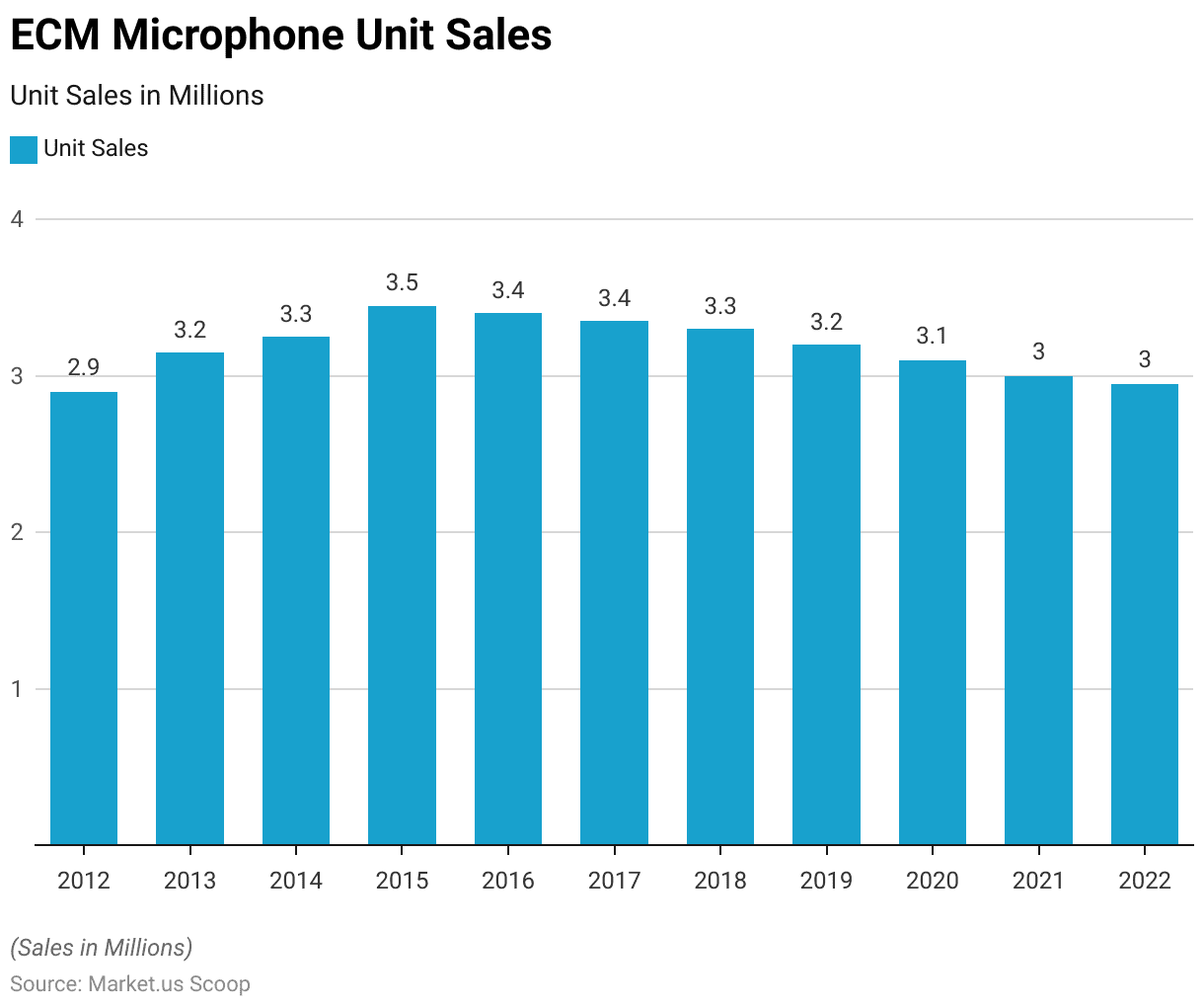
MEMS Microphones Sales
- The sales figures for MEMS (Micro-Electro-Mechanical Systems) microphones have exhibited a consistent upward trajectory over the past decade, reflecting the growing demand for these miniature sound-capturing devices.
- Beginning in 2012 with 1.55 million units sold, the market witnessed a substantial increase to 2.3 million units in 2013.
- The momentum persisted, propelling sales to 6 million units in 2019 and 6.65 million units in 2020.
- Despite challenges posed by external factors, such as the global pandemic, the market resilience was evident, with sales reaching 7.45 million units in 2021 and culminating in an impressive 8.2 million units in 2022.
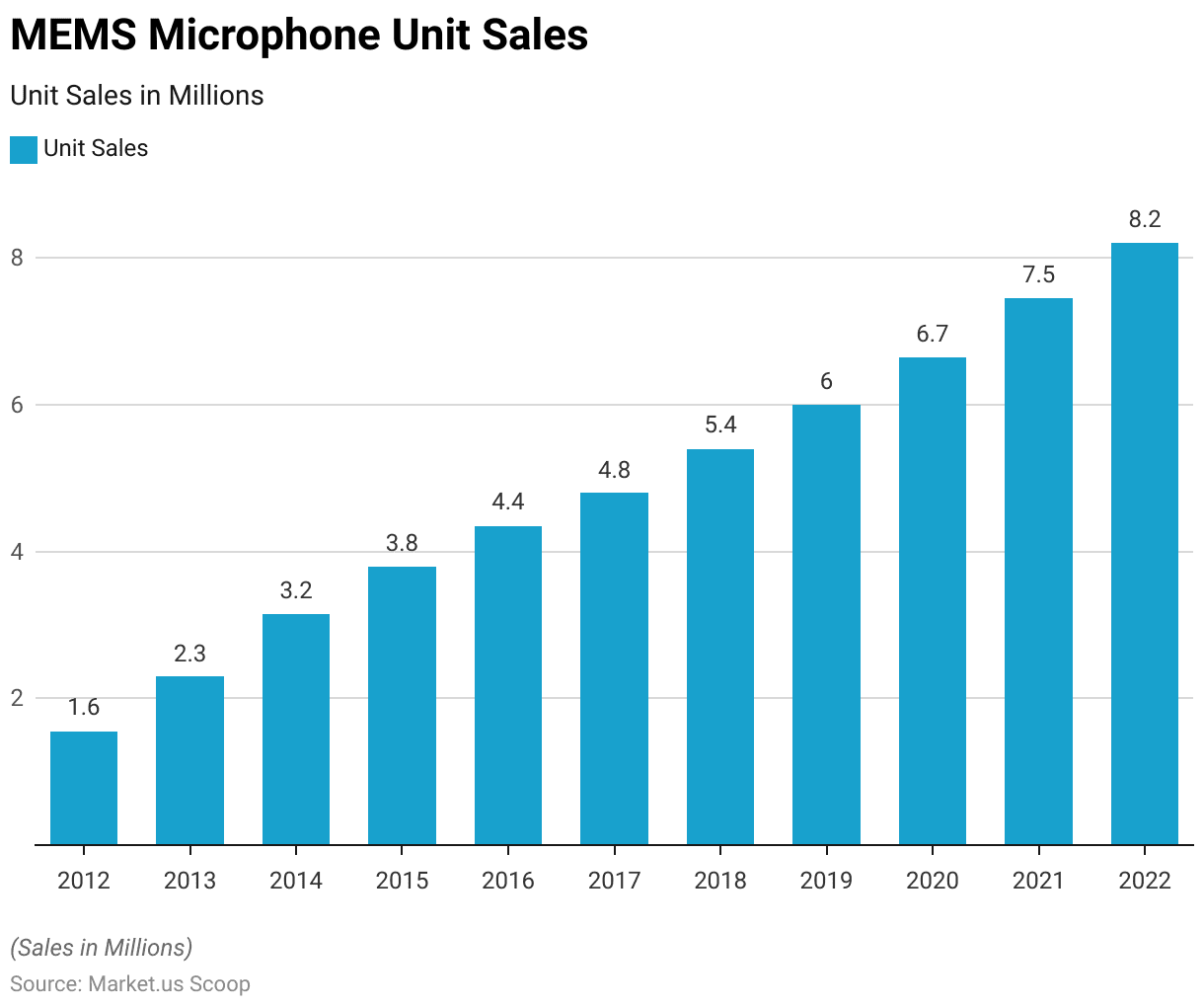
Sensitivity of Microphones According to Use
- Microphones are utilized across various applications, each requiring specific sensitivity ranges to capture sound effectively.
- For close-in, handheld applications such as live performances or interviews, microphones typically operate within a sensitivity range of 2–8 millivolts per Pascal (mV/Pa).
- In normal studio settings, where high-quality audio recording is crucial, microphones have a sensitivity range of 7–20 mV/Pa, providing enhanced clarity and fidelity.
- For distant pickup applications like recording lectures or capturing ambient sounds, microphones are designed to operate within a broader sensitivity range of 10–50 mV/Pa, allowing them to capture audio from a distance while maintaining adequate signal strength.
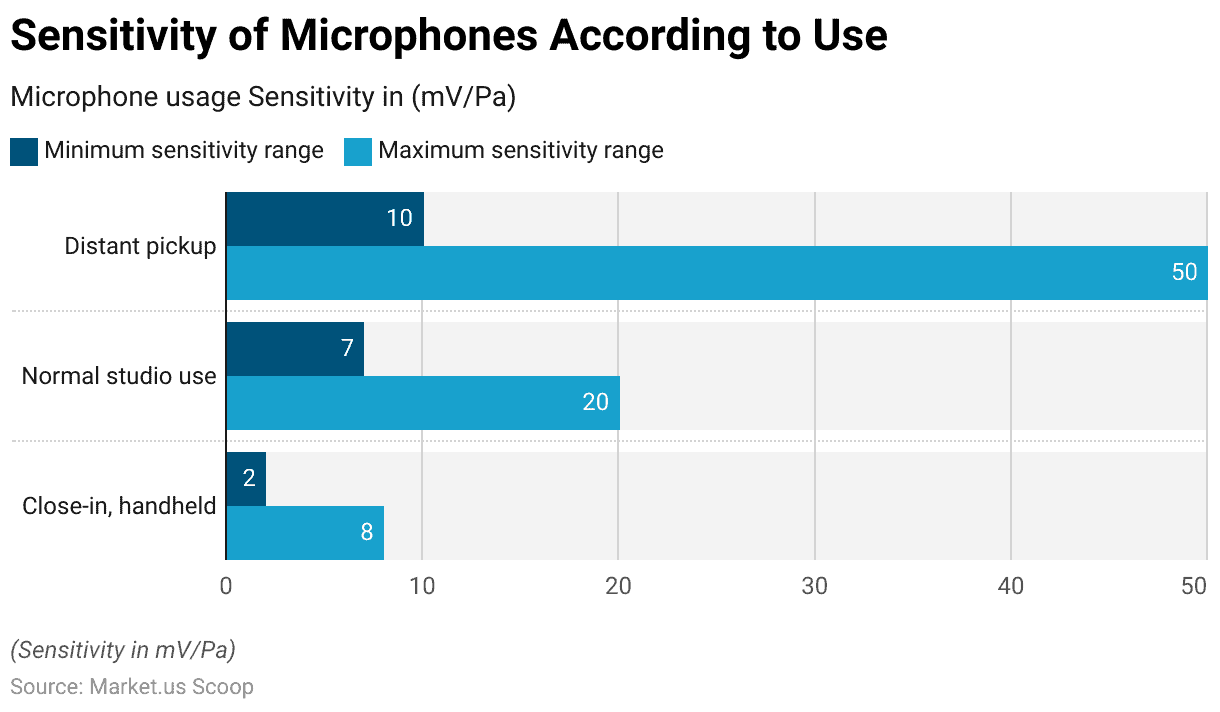
Privacy Concerns Around Microphone-Enabled Devices
- In 2014, Google’s Chrome web browser faced criticism for its built-in capability to listen for the phrase “OK, Google” to activate its voice search function.
- This feature was initially included but later removed from both the open-source Chromium browser and Google Chrome due to privacy concerns.
- In 2015, privacy advocates raised concerns with the FTC, alleging that Samsung’s microphone-equipped SmartTV was continuously active, potentially violating federal wiretapping regulations.
- The complaint stemmed from users’ observations of Samsung’s Privacy Policy, which cautioned that the TV’s voice-controlled search feature could inadvertently capture and share sensitive conversations with third parties.
Discuss your needs with our analyst
Please share your requirements with more details so our analyst can check if they can solve your problem(s)



